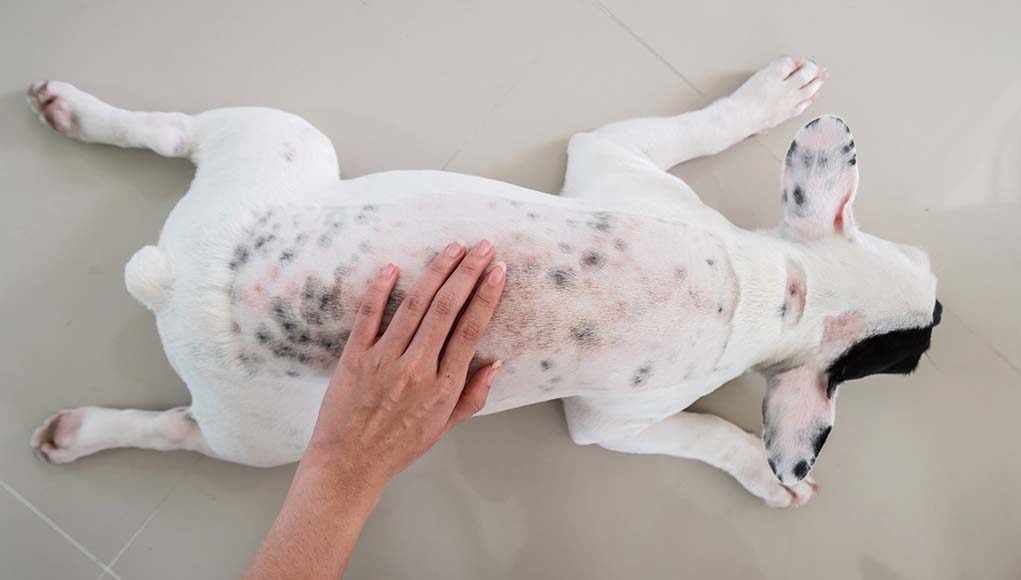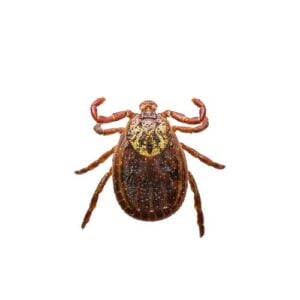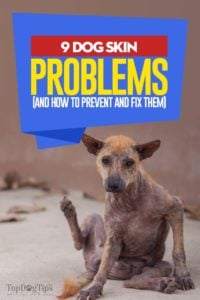Table of Contents
A variety of different dog skin problems are the most common health issues pet owners have to deal with.
There are numerous dog skin problems you're likely to encounter in your pup's lifetime, and it's important to know what they are and how to spot them and deal with them effectively.
Geneva Pagliai, DVM says,
While some dogs' skin conditions can be treated at home, any worsening skin issue or one that continues beyond one or two weeks without improvement is a good reason to head to your veterinarian.
If you have a dog, you will most likely have one of these skin problems with your baby.
Like when my little puppy, Belle, got fleas and how I got rid of them. More on that later.
Before we dive in, go ahead and check out some of the products in this article.
I personally have used or know other dog owners that have used all of these products, and they got great results.
What to Look for When Checking for Dog Skin Problems
All dog owners should be on the lookout for potential dog skin problems.
Remember to pay attention to your canine’s skin, including the area inside the ears. Some of the signs of skin issues to take note of include:
- Excessive scratching
- Pulling out of fur
- Scabs
- Sores
- Dullness of coat
- Hair loss
- Redness or brownish discharge in the ears
- Rash
- Red spots
- Dark spots
- Red bumps (of any size)
My Choices of Dog Skin Problem Products
| Preview | Product | Rating | |
|---|---|---|---|

|
Veterinary Formula Clinical Care Antiparasitic &... | 60,499 Reviews | Check Price |

|
FRONTLINE Plus Flea and Tick Treatment for Medium... | 20,882 Reviews | Check Price |

|
BEXLEY LABS Curaseb Medicated Topical Wipes for... | 6,910 Reviews | Check Price |

|
Pet Honesty Chlorhexidine Cat & Dog Anti-Itch... | 8,260 Reviews | Check Price |
Here are some of the most common dog skin problems photos and their description.
9 Common Dog Skin Problems
1. Dry, Flaky Skin
Dry and flaky skin is also often referred to as itchy skin because it will always cause itching-related discomfort for the dog.
In most cases of dry and flaky dog skin problems, this is not a serious issue.
However, it can be a symptom of mange, allergies, or other skin diseases discussed below, which can be more dangerous to the dog.
Many canines will suffer from dry and flaky skin during the winter months.
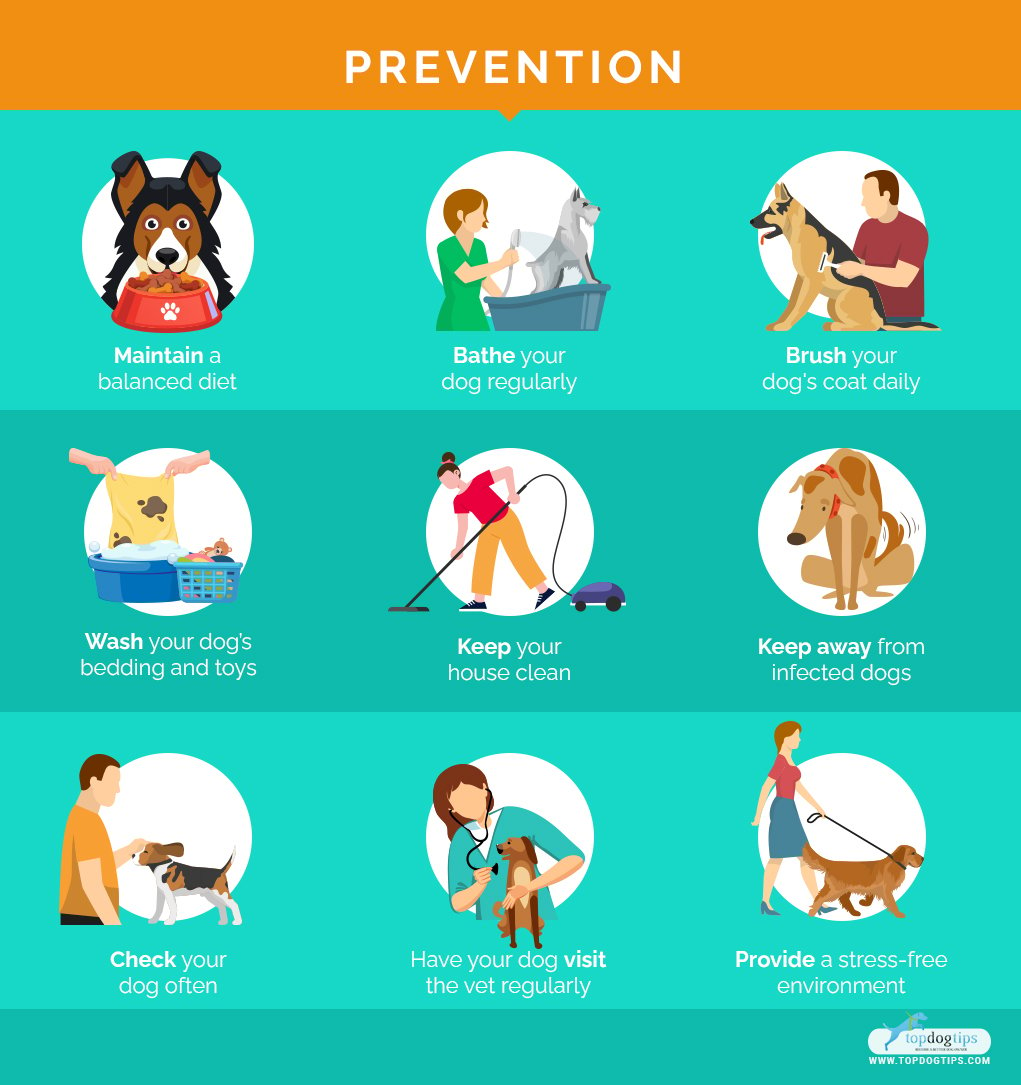
How to Prevent It:
Since dry dog skin problems have multiple potential causes, it is not easy to pinpoint one exact thing that you can do to prevent it.
Dry skin can be due to nutrient deficiency, so ensure your dog’s diet is adequate and well-balanced.
Note that your dog's nutritional needs also change as seasons change, and you may need to adjust the foods you're feeding.
Some other possible causes can be bad hygiene, poor grooming, or lack thereof.
Too much grooming can also be an issue. Bathe your dog once a month, but not more often, to avoid over-bathing and stripping of essential oils.
Use gentle soaps or vet-approved dog shampoos without synthetic ingredients for bathing; oatmeal shampoos are considered the best for dogs.
Using human shampoo to bathe a dog can also cause this problem.
Brush your dog’s coat daily, particularly in winter, to stimulate natural oils.
How to Treat It:
The first step is to determine the exact cause if your dog suffers from dry or itchy dog skin problems, and a vet can only do this through an examination at the vet clinic.
If dry skin is not caused by an underlying disease, allergies, or parasites, treating this issue will be simple and likely to change habits (better diet and hygiene).
If the problem is only a symptom of another health issue, consult your vet on treatment options.
RELATED: 6 Home Remedies for Dry and Itchy Skin on Dogs: Homemade Lotions and Moisturizers
2. Allergic Dermatitis
Allergies bring on these types of dog skin problems.
Allergies in dogs are a complex issue for pet owners to investigate because canines can react to many things, including food, grooming products, or environmental allergens like pollen or dust mites.
Insect bites can also cause allergies in dogs.
Some of the symptoms include relentless scratching and licking due to itching and rashes, among other signs.
How to Prevent It:
Keep your house clean to eliminate allergens like dust mites.
If you have multiple pets, you can even use pet dander removers to ensure one pet doesn't cause allergies in another pet.
Wash your dog’s bedding and bathe your dog about once a month.
Note that some dog grooming products, particularly shampoos, can cause allergic reactions in dogs, too.
These are often products with many synthetic ingredients or those made for humans.
Always rinse off shampoo or soap thoroughly after the bath. You can also try hypoallergenic shampoos or medicated dog shampoos.
- GENTLE SOOTHING – Helps...
- FAST ACTING – Works fast...
- VET-RECOMMENDED – This...
- FORMULATED FOR DOGS –...
- APPLICATION: This product is...
If you notice that your dog is scratching or licking more than usual, put an Elizabethan collar on him and keep an “itch diary” to track possible causes and prevent more serious dog skin problems that your pup will cause through constant scratching.
Food-related allergies in dogs cannot be prevented since there's no way to know what the dog will be allergic to in advance.
How to Treat It:
Properly identifying the allergen that caused these dog skin problems is important so you can treat the underlying cause and prevent future flare-ups by avoiding exposure to the allergens.
Atopy or environmental allergies are by far the most common allergies in dogs.
If your dog develops environmental allergies at a young age, your vet can perform a blood test or a skin test to determine exactly what they are allergic to.
This is helpful because they can create a plan to help desensitize your dog to the environment.
In the past, steroids were typically the treatment of choice for allergies and severe itch.
While steroids work great, newer options, such as Apoquel (oral medication) or Cytopoint injections, are safer and very effective.
Over-the-counter antihistamine medications, such as Zyrtec or Bendaryl, can help dogs with mild allergies.
Ask your vet first if this is a safe option for your dog.
There are also several supplements, such as Omega 3 Fatty Acids and Dermaquin, that can help.
Despite popular belief, food-related allergies in dogs are much less common than those caused by the environment.
As a last resort, you can investigate a food-related allergy by consulting with a vet, and your pup is likely to be placed on an elimination diet.

3. Parasitic Infection
External parasites are also a common cause of allergies and, subsequently, of several dog skin problems.
Mites, fleas, and ticks are the most common culprits, and each is unique in how they work and how to prevent and treat them.
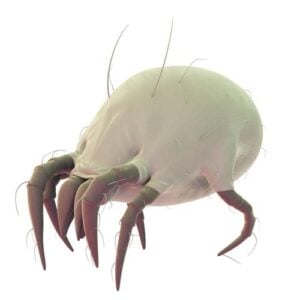
Mites
- Mites found on dogs are tiny parasites that cause a skin condition known as mange.
Dogs can suffer from many types of mange, but the two most common are sarcoptic mange (canine scabies) and demodectic mange (Demodicosis).
Sarcoptic mange is contagious and spreads easily, while demodectic mange is not contagious.
It can cause itching, sores, red skin, and hair loss, while demodectic mange causes sores, bald spots, and scabbing.
Prevention
Preventing mange is only possible by keeping your dog away from already infected dogs.
Treatment
Treatment of mange in dogs will depend on the type of dog that you have.
Sarcoptic mange is easily treated with topical products that contain selamectin, like Revolution from Zoetis.
Some oral products are also used if they contain milbemycin.
Milbemycin can also be effective when treating demodectic mange.
Many of the newer flea preventions, such as Bravecto, NexGard, and Simparica, can also help prevent or treat mites.
Other common fixes include bathing your dog once a week with an insecticide called amitraz or benzoyl peroxide, commonly found in medicated dog shampoos.
- Keep your dog protected from...
- Break the flea life cycle with...
- Trusted by pet owners for over...
- FRONTLINE Plus also comes in a...
- Treat all dogs or cats in your...
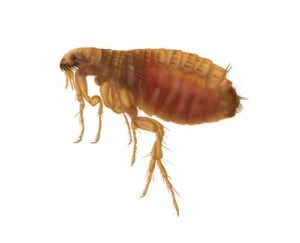
Fleas
Fleas are probably the most common problem for dog owners to deal with, and they can cause some dog skin problems.
In fact, my dog, Belle, recently had a bad case of fleas. Now being a new dog owner, I had never seen or experienced having a dog that has fleas.
If you haven't, you need to know that the dog isn't the only one at risk. These fleas can lay eggs in your carpet and bite you as well.
I hated seeing her constantly itch, and I had a few weeks where I neurotically had to backtrack to places where she commonly lays and sits.
She sits at my feet upstairs while I work, AND she sunbathes in my room on the carpet in front of the window, so I had to treat the upstairs carpet.
We had to take her to the vet and spend a couple hundred dollars to get a prescription.
Fleas are tiny insects that often go unnoticed, but you can usually see their eggs or droppings in or on your dog’s coat.
Symptoms of fleas to look for are excessive scratching or licking, hot spots, and scabs, while severe flea infestations can even lead to anemia and blood loss in dogs.
Prevention
The most well-known prevention is using flea preventatives like flea collars, pills, drops, and others.
Also, if you have a yard, keep it clean.
Mow the grass regularly and keep the bushes and shrubs trimmed.
Don’t leave bowls with dog food outside since this can attract wild animals like raccoons or possums, as well as feral cats and dogs who will all carry fleas.
You also have to keep your house neat.
Vacuum regularly (it's a good idea to have a separate pet-specific vacuum) and wash your dog’s bedding, toys, and crate with hot water.
Make it a habit to check your dog for fleas and ticks regularly, especially if it spends much time outdoors.
Treatment
If you are sure that your dog has fleas, you will need to treat not only your pet but also your home and your yard.
Prescription-grade flea treatments purchased through your vet are undoubtedly the most effective.
You will need to bomb or spray your home and wash all your rugs and bedding in hot water.
Killing the larvae is crucial to eliminate fleas because flea re-infestation is completely common.
A one-time treatment will not be sufficient, as it can take 3-6 months to get rid of the entire life cycle completely.
Once the fleas are gone, it is very important to continue monthly prevention to avoid this from happening again in the future.
Follow the instructions on the product, and don’t forget to treat your home for fleas using carpet sprays/powders or other solutions to prevent future flea problems.
Ticks
Ticks are external parasites just like fleas that feed on the blood of their host but are significantly more dangerous, bringing more serious health issues than just dog skin problems.
They are easy to spot with the naked eye.
It is important to react fast if you notice that your dog has ticks since they can cause anemia, blood loss, and even transmit Lyme disease and other bacterial infections, which can be deadly.
Prevention
Take the same steps to prevent your dog from coming in contact with ticks as you would for fleas.
Several of the good flea preventatives, like oral chews and topical treatments, contain tick prevention and several fleas and tick collars.
Similarly, clean your home and backyard regularly and check your dog often for ticks.
Treatment
Physically removing ticks is the only available treatment. To remove a tick correctly, grasp it with tweezers and pull it straight out.
Be gentle when you do this since pulling too hard and twisting can lead to a tick’s head staying lodged in your dog’s skin, sometimes leading to infection.
You can also use a dog tick remover, which helps avoid that problem.
If your dog has a severe tick infestation, take him to the vet to treat the problem, usually with an insecticide dip.

4. Bacterial Infections
In addition to parasitic infections, bacteria can also cause common dog skin problems due to bacterial infections.
Although many bacteria can lead to infections visible on the dog's skin, the most common skin conditions resulting from bacterial infections are folliculitis and impetigo.
Bacterial Folliculitis
Bacterial folliculitis is a bacterial infection that can cause various skin abnormalities in dogs, such as bumps, sores, and scabs.
These dog skin problems are easily spotted in short-haired dogs, while long-haired dogs may have dull coats and shed a lot.
Folliculitis can also be secondary to allergies, as described above.
Prevention
There isn’t much you can do to prevent bacterial folliculitis in dogs.
However, since allergies are often the underlying cause, managing your dog’s allergies with medications, shampoos, diets, and supplements will help.
Treatment
Treating bacterial folliculitis requires a three-pronged approach: topical therapy, systemic therapy, and treatment of any underlying disorder.
Antimicrobial drugs are almost always employed, and this must all be done with your veterinarian's supervision.
Impetigo
Impetigo is also a bacterial infection, but unlike folliculitis, it's most often found in puppies.
The most prominent symptom of impetigo in dogs is blisters that are filled with pus.
These blisters often break and crust over.
They usually develop on the pet's abdomen on hairless pieces of skin.
Generally, this is not a serious condition, and it is easily treated, although the infection may persist or spread in some cases.
Prevention
Same as with folliculitis, there isn't much you can do to prevent impetigo.
It is mostly caused by the staphylococcus bacteria, which can live easily in a free environment, and there's no way to predict this.
Treatment
Even though impetigo can sometimes resolve on its own, it is best to treat it to prevent the further spreading of the disease.
The treatment usually involves medicated shampoo, topical creams, and antibiotics.

5. Yeast Infection
Yeast infection symptoms in dogs include itchy, irritated, or discolored skin, usually on the pet's ears and paws.
If you notice that your dog is incessantly scratching his ear or chewing and licking his toes, he may have a yeast infection.
It is also common for a yeast infection to smell bad; you might even smell it before you see it.
How to Prevent It:
Yeast infection is more common in the hot summer months.
Regular bathing is also a good way to prevent yeast infection.
Avoid sugary treats or high-carb meals that may feed the infection.
If your dog likes to swim, ensure they are completely dry, as yeast loves moist hot environments.
- SUPPORTS SKIN PROBLEMS: These...
- NO STING FORMULA: With a...
- DEODORIZES & CLEANS: Forget...
- VET FORMULATED AND...
- MADE IN THE USA: At Curaseb,...
How to Treat It:
The treatment of the yeast infection will often depend on the spot where it occurred.
However, it is common for dog yeast infections to be treated with topical creams, medicated dog shampoo baths, and oral drugs in some cases.
6. Seborrhea
Seborrhea is a skin condition that causes dandruff and greasy skin.
Sometimes, seborrhea-related dog skin problems are caused by genetic disorders.
If that's the case, it'll last for the dog’s entire life and become apparent during the dog’s first two years of life.
However, most commonly, it's a symptom of other medical problems, like hormonal abnormalities, autoimmune disorders, allergies, or parasites.
How to Prevent It:
There is no way to prevent idiopathic (genetic) seborrhea.
Preventing seborrhea caused by parasites or allergies is possible if you prevent contact with parasites or allergens using the abovementioned prevention tips.
Note the dangers of certain medicated shampoos for dogs prone to asthma attacks.
How to Treat It:
Treatment of seborrhea in dogs will depend on the underlying disease.
Idiopathic seborrhea can’t be healed, but you can manage it.
It is usually managed with proper hygiene, frequent baths with medicated shampoos, and adjusted nutrition, which is best discussed and planned according to your veterinarian.
Regular dog dandruff treatments were also ineffective for idiopathic seborrhea but were effective for cases caused by allergies or parasites.

7. Alopecia
Alopecia is a disease that causes excessive shedding and hair loss in dogs.
Alopecia-related dog skin problems have multiple potential causes, including stress, poor nutrition, allergies, parasites, and bacterial infections mentioned above.
In some cases, alopecia can also be caused by dog genetic disorders.
How to Prevent It:
Because there's a strong correlation between nutrition and alopecia, preventing these dog skin problems is achieved with a high-quality diet of top-quality foods, using tick or flea repellents, and providing a stress-free environment for your pooch.
You can only avoid genetic alopecia with responsible breeding.
How to Treat It:
Treatment of alopecia entails treating the cause in those cases where that is possible.
In addition to topical creams and antibiotics for dogs with alopecia, another common approach includes supplements in the diet that will stimulate hair growth, like vitamin D, melatonin, and fish oil supplements with omega-3 essential fatty acids.

8. Ringworm
Even though the name suggests otherwise, a ringworm is not actually a worm but a fungus.
Circular patches that can appear anywhere on your dog’s body are the one specific symptom responsible for the “ring” in the name of this disease.
These lesions are often accompanied by scaly patches, inflammation, hair loss, and other dog skin problems.
This disease is more common in puppies and can spread quickly to other dogs if left untreated.
How to Prevent It:
The best way to prevent ringworm is to ensure there's no contact between infected and non-infected dogs since outbreaks are more common in puppy mills, animal shelters, pet stores, and other similar living conditions where animals are lumped together.
| Preview | Product | Rating | |
|---|---|---|---|

|
Pet Honesty Chlorhexidine Cat & Dog Anti-Itch... | 8,260 Reviews | Check Price |

|
Veterinary Formula Clinical Care Antiparasitic &... | 60,499 Reviews | Check Price |

|
Nootie Medicated Anti-Itch Spray, Itch Relief for... | 98 Reviews | Check Price |
How to Treat It:
The usual and most effective treatment protocol for ringworm is basically a three-step approach to applying topical medication, using oral medication, and dealing with the external environment.

9. Skin Tumors
Skin cancer or tumor, while least common, is the most serious condition among all other mentioned dog skin problems, and it requires immediate reaction.
If you notice any hard lumps on your dog’s skin, take him to the vet immediately for a full diagnosis.
How to Prevent It:
Skin tumors can be caused by viruses, hormones, and genetic factors, but statistically, they are most commonly caused by sun exposure, especially in dogs with light-colored or thin fur.
Keep your pooch away from unnecessary sun exposure, always provide enough shade in summer, and use sunscreen for dogs.
Also, inspect your dog’s skin regularly, at least once a month, but preferably every time you groom the dog.
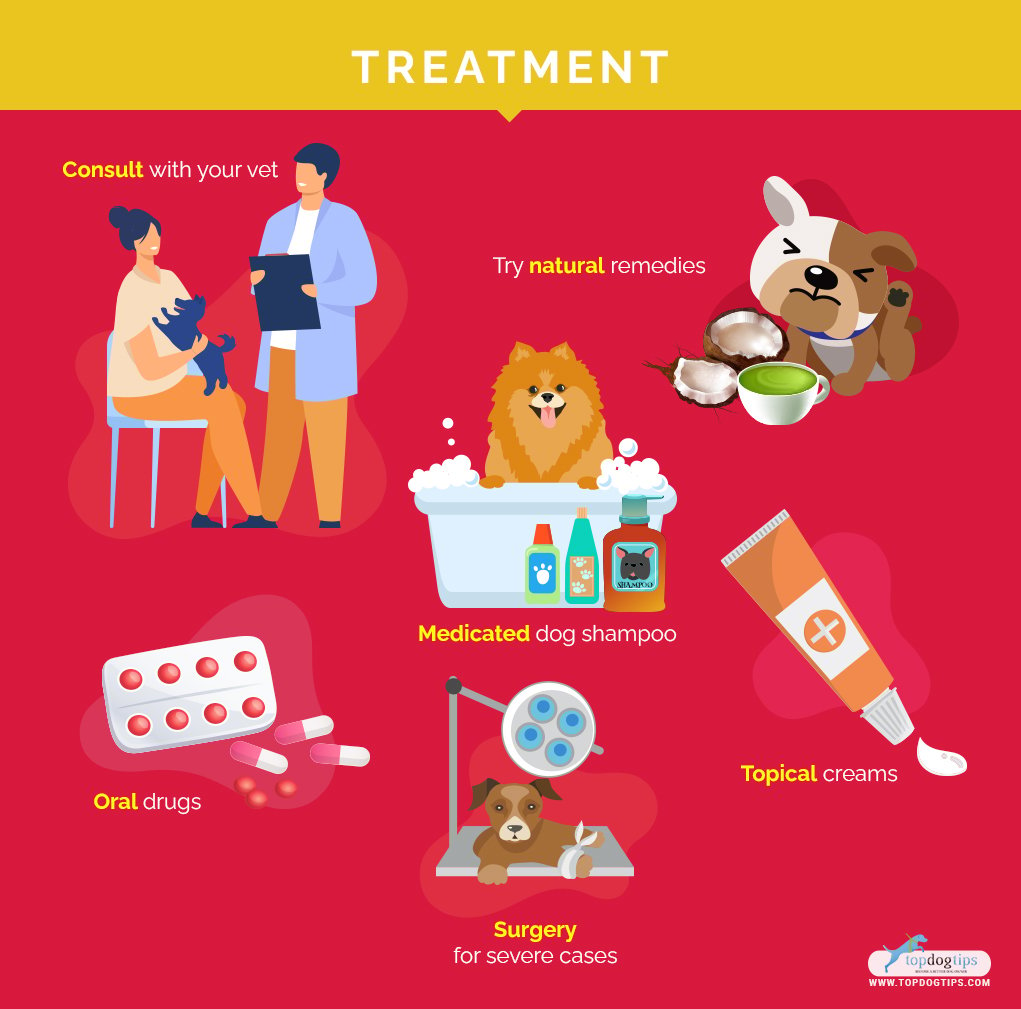
How to Treat It:
Even though there are many types of skin cancers, the most common treatment is surgical removal.
Depending on the stage in which the tumor has been discovered, this can be a very effective option, and the prognosis for skin tumors that are localized and not spread is excellent.
In other cases where tumors have spread, radiation and chemotherapy might also be necessary, but the prognosis is less favorable.
Pet Insurance For Dog Skin Problems
Fortunately, certain insurance providers can help cover the necessary treatments you need to fix some of these skin problems.
For example, ASPCA Pet Health Insurance has been very popular, and many pet owners use it!
Having them around when stuff like this happens relieves some of the stress of having to pay for expensive ointment and cream medications!
Trust me, I wish I didn't wait until my dog was two. She occasionally gets these skin problems on her belly and arms, and her visits used to cost me at least $200!
Answers to Other Common Questions About Dog Skin Problems
If you have other questions about dog skin problems, talk to your vet or read through the information below.
How Can I Treat My Dog’s Skin Problems?
The best option is always to consult your vet. They will suggest a treatment based on the cause.
In the meantime, ensure your dog gets a balanced diet and stays clean. Regularly check for skin issues as well.
Why Does My Dog Have Scabs All Over His Body?
Of the above conditions, folliculitis is most likely to cause scabs all over your dog’s body. It will also cause bumps and sores.
If you think your dog has folliculitis or you notice a lot of unexplained scabs, take your pet to the vet.
What Does Dermatitis Look Like on a Dog?
Take a look at the picture earlier in the article about allergic dermatitis.
Most dogs with dermatitis will have blisters, rashes, skin lesions, swelling, or redness.
Expect your dog to try to scratch, lick, or bite the affected skin for relief. Don’t let him, as this can lead to infection.
What Helps Dogs With Skin Problems?
The best treatment for dog skin problems depends on the specific problem.
That is why it is important to visit your vet for a diagnosis. For example, antihistamines work well to treat allergic dermatitis.
What Ointment Is Good for Dog Rashes?
You can ask your vet to prescribe an ointment for dog rashes.
Sometimes, prescription sprays can also help with itching or infection.
At the Tail's End
These are some of the most common dog skin problems you're likely to deal with, but there are plenty more skin conditions out there to learn about. The one tip that applies to all of the above-mentioned dog skin problems is to maintain regular proper grooming habits, feed high quality and well-balanced diet, check your dog’s skin for any changes regularly, and if you notice any color or texture changes, lesions, hot spots, or anything at all unusual, take your pooch to the vet to get a diagnosis.
Analyze the above dog skin problem photos to recognize any of them on your pooch and deal with it fast.
Dog Skin Problems: Key Takeaways
- Although less frequent, skin cancer or tumors are the most dangerous ailment affecting a dog's skin. Viruses, hormones, and hereditary factors can all potentially induce skin cancers.
- Both allergies and external parasites like fleas and mites are major contributors to itching skin.
- The most typical symptoms of dog allergies are frequent itchiness, redness, and irritation.
READ NEXT:
- Oatmeal Bath for Dogs
- 6 Home Remedies for Dog Skin Allergies
- 6 Home Remedies for Dry and Itchy Skin on Dogs: Homemade Lotions and Moisturizers
Disclosure: We may earn affiliate commissions at no cost to you from the links on this page. This did not affect our assessment of products. Read more here and find full disclosure here.


